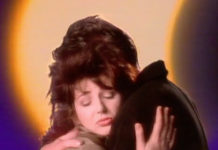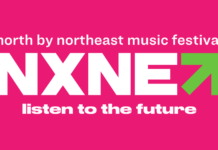By Mitch Rice
Live music performances have long been defined by more than just sound. Over the years, visuals have played an increasingly important role in enhancing the overall concert experience. From dazzling lights to interactive set designs, the visual aspect of a performance can be as impactful as the music itself. One of the most transformative innovations in this space is the use of LED displays, especially on the LED stage. These displays have revolutionized how musicians, event organizers, and audiences experience live shows by creating immersive, dynamic environments that elevate the performance to a new level.
This article explores the impact of LED displays on live music performances, their growing importance, and how they enhance both the artistic and technical aspects of a live show.
1. Enhancing Visual Storytelling
Live performances are about more than just the music—they’re about telling a story. LED displays offer artists and production teams the opportunity to use high-resolution visuals to communicate that story more effectively. By integrating animated visuals, video clips, or even live camera feeds into a show, the LED stage becomes a living part of the performance, adding layers of meaning and emotion.
- Storytelling Through Visuals: Artists can synchronize the visuals on LED screens with their music, crafting an immersive experience that complements the themes of the songs. For instance, a ballad might be accompanied by serene, slow-moving visuals, while an upbeat rock song might be paired with fast, intense light patterns. This visual accompaniment enhances the emotional connection between the artist and the audience, making the performance feel more complete.
- Dynamic Set Designs: LED displays offer incredible flexibility in terms of stage design. Instead of relying on static backdrops, event organizers can create dynamic, ever-changing sets that evolve throughout the performance. For example, the backdrop can change from a cityscape to a cosmic landscape in seconds, adapting to different songs and moods. This allows the artist to transport their audience to various visual worlds, enhancing the thematic elements of the performance.
2. Creating Immersive Experiences for the Audience
One of the most significant impacts of LED displays is their ability to immerse the audience in the performance, no matter where they are seated. Whether it’s a small, intimate venue or a massive outdoor stadium, LED stage screens bring the show closer to the audience and make every seat feel like the best one in the house.
- Visibility in Large Venues: In larger venues, where not everyone can be close to the stage, LED screens play a critical role in ensuring everyone feels connected to the performance. High-definition screens can display live footage of the performers, capturing close-ups of their facial expressions and instruments, so even fans seated far away can see the action in detail. This makes the concert experience more inclusive, ensuring that nobody misses out on the magic happening on stage.
- Interactive Elements: Some LED displays allow for real-time audience interaction, such as projecting live feeds of the crowd or even showing interactive social media posts. This creates a two-way relationship between the performers and the audience, making the crowd feel like an active participant in the show. In some instances, audience members can even control certain aspects of the LED visuals through their phones or gestures, further enhancing the level of engagement.
- Environmental Effects: LED displays can also extend beyond the stage itself, creating a 360-degree visual environment. For instance, LED walls and floors can work in tandem to create an all-encompassing atmosphere, making the audience feel as though they are part of the performance. This technology is particularly popular in electronic dance music (EDM) shows, where LED screens and lights create hypnotic patterns that captivate the crowd, enveloping them in the music.
3. Technical Advantages of LED Displays
Beyond their aesthetic appeal, LED stage displays offer several technical advantages that make them an indispensable tool for live music performances. Their durability, energy efficiency, and versatility make them the preferred choice for artists and event organizers.
- High-Resolution Visuals: Modern LED displays offer crisp, high-definition visuals that are essential for large-scale performances. These screens can display intricate graphics, animations, and videos without any loss of quality, even in bright environments. This level of clarity ensures that the visuals look stunning from any angle and distance, providing a consistent experience for the entire audience.
- Brightness and Contrast: LED displays outperform traditional projection screens when it comes to brightness and contrast, making them ideal for outdoor performances or events where lighting conditions vary. Even in daylight, LED screens maintain their vibrancy and visibility, ensuring that the visuals remain a strong element of the performance, regardless of external factors.
- Versatile Configurations: LED displays are highly customizable and can be configured in various shapes, sizes, and layouts to suit the specific needs of a performance. Whether it’s a traditional rectangular screen, a curved display, or a modular setup that wraps around the stage, LED screens offer endless possibilities. This versatility allows artists and designers to create unique stage setups that fit the style of the performance and the venue.
4. Supporting Creative Collaboration
The presence of LED stage displays opens up opportunities for collaboration between musicians, visual artists, and lighting designers. These collaborations result in shows that are more visually engaging and creatively diverse, allowing artists to express their vision in new ways.
- Collaborating with Visual Artists: Musicians often partner with visual artists to create bespoke visuals that accompany their performances. These collaborations allow artists to present their music in new contexts, whether it’s through abstract designs, narrative-driven video clips, or interactive digital art. LED displays serve as the perfect canvas for these collaborations, offering artists a large-scale, high-resolution platform to showcase their work.
- Lighting Design Integration: LED displays and stage lighting often work in harmony to create a cohesive visual experience. Lighting designers can synchronize LED visuals with the stage lights, creating stunning effects that align with the music’s rhythm and energy. This combination enhances the emotional impact of the performance, making it feel more immersive and well-rounded.
5. Sustainability and Cost-Effectiveness
In addition to their creative benefits, LED displays are also more environmentally friendly and cost-effective than traditional stage setups. This is particularly important as the music industry shifts toward more sustainable practices.
- Energy Efficiency: LED technology is significantly more energy-efficient than older forms of stage lighting and projection. This reduced energy consumption not only lowers the carbon footprint of live performances but also reduces operational costs for event organizers. For long tours, where energy usage accumulates quickly, this efficiency can result in significant savings without sacrificing visual quality.
- Durability and Longevity: LED screens are known for their durability, making them ideal for the wear and tear of touring. Unlike traditional projection equipment, which can be fragile and prone to damage, LED displays can withstand the rigors of frequent setup and takedown. This reliability means fewer replacements and repairs, further reducing costs for artists and production teams.
6. The Future of LED Displays in Live Performances
As technology continues to advance, the role of LED displays in live music performances will only grow. We are already seeing innovations such as flexible LED screens that can bend and fold to create more complex, organic stage designs. In the future, we may see even more interactive elements, such as virtual reality (VR) or augmented reality (AR) integration, where LED displays work in tandem with immersive technologies to create multisensory experiences.
- Expanding the Boundaries of Creativity: With continued improvements in LED technology, artists will have even more creative freedom to experiment with their stage designs. As the technology becomes more accessible, we may see smaller venues and independent artists incorporating LED displays into their shows, making high-quality visuals a staple of live music, regardless of the scale of the performance.
Conclusion
LED displays have had a profound impact on the world of live music performances. They have transformed how artists engage with their audiences, bringing new dimensions of storytelling, interaction, and immersion to the concert experience. The LED stage is no longer just a platform for performers—it’s a dynamic visual tool that enhances the music and creates lasting memories for the audience.
With their technical advantages, versatility, and creative potential, LED displays are set to play an even more significant role in shaping the future of live performances, pushing the boundaries of what’s possible in music and stage design. Whether you’re attending a massive festival or an intimate club performance, chances are an LED display will be there, lighting up the stage and amplifying the magic of live music.
Data and information are provided for informational purposes only, and are not intended for investment or other purposes.






